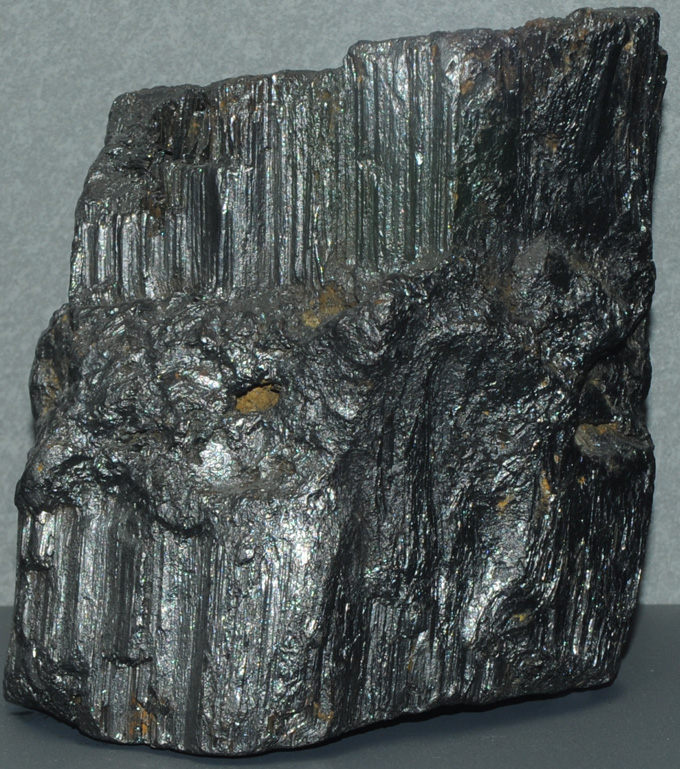Science
Related: About this forumNutmegYankee
(16,199 posts)antiquie
(4,299 posts)http://airs.jpl.nasa.gov/news_archive/2013-co2-400ppm/
Tuesday Afternoon
(56,912 posts)n2doc
(47,953 posts)
Tuesday Afternoon
(56,912 posts)pscot
(21,024 posts)than we did the year before. If temperatures rise 5 degrees you will see hell on earth. And the temperature is going to rise 5 degrees and more.
darkangel218
(13,985 posts)You know what? We deserve what comes our way. We fucking did this.
Too bad for all the other innocent beigns who will perish along with us.
![]()
LongTomH
(8,636 posts)Dr. K. Eric Drexler has written on this many times. Here's an excerpt from his blog post: Greenhouse Gases and Advanced Nanotechnology.
To many readers, this is nothing new, yet most who know this make a simple mistake [see below]. They think of carbon as if it were sulfur, with pollution levels that rise and fall with the rate of emission: Cap sulfur emissions, and pollution levels stabilize; cut emissions in half, cut the problem in half. But carbon is different. It stays aloft for about a century, practically forever. It accumulates. Cap the rate of emissions, and the levels keep rising; cut emissions in half, and levels will still keep rising. Even deep cuts won’t reduce the problem, but only the rate of growth of the problem.
The preceeding paragraphs were from an article Dr. Drexler wrote for Edge magazine. He goes on:
Read the rest of the post here: http://metamodern.com/2009/01/01/greenhouse-gases-and-advanced-nanotechnology/
Gregorian
(23,867 posts)And yes, like the post above says, carbon dioxide lingers about a century. So that car, train, bus, plane from 1930, along with the Gulf wars, and all of the rest are still just hanging in our air.
Recently I've come to the realization that it's all over. Rising oceans are in our future. And not too distant at that.
Really stupid. Really irresponsible.
Lugal Zaggesi
(366 posts)Drought and floods affecting planet-wide Agriculture - and the Wars that are started by billions of desperate humans - will kill you way before the rising oceans are a big problem.
mindwalker_i
(4,407 posts)Not sure if "pole" is the right word here, or "hemisphere" since it's spread out from the pole, but but covering the hemisphere by a long shot. Regardless, what's causing it to concentrate there? It seems, overall, to be north of the US which indicates that it's moving north rather than being created there. Of course, if warming is causing methane to be released from permafrost, perhaps there's a lot of CO2 there as well?
It would seem that one possible way to combat this would be to float a bunch of big-ass barges carrying plants, like with helium or hydrogen - before you go all Hindenburg on me, I was thinking of autonomous barges. It might be hard to float enough to make a difference though.
n2doc
(47,953 posts)Northern Hemisphere has a lot of emissions, and circulation tends to keep gasses in the same hemisphere. If sources were even, then the distributions would be even over time.
mindwalker_i
(4,407 posts)I wonder what the air currents are like to circulate it there, and pull it more northward.
Igel
(35,300 posts)If you look at the S. Hemisphere you'll see it's lower, but it's April--which is near the end of the growing season there.
The average concentration shows a large dip every spring, but that's because it's the average a 32.5 deg N latitude--which makes it what, Southern US and points E/W of there (around the globe)?
muriel_volestrangler
(101,306 posts)
In the middle latitudes at 32.5, 62.5, and -27.5, we see greater swings in carbon dioxide due to the seasonal growth and die-off of plants in these regions.
Near the north pole, around 87.5 degrees latitude, we see the greatest amplitude in the seasonal cycle of carbon dioxide. But in this region the concentration of carbon dioxide is mostly driven by atmospheric circulation patterns which transport the gas from more southern latitudes into the Arctic as polar winds weaken in the spring. It is in this region where the concentration of carbon dioxide reaches its highest peak on Earth.
djean111
(14,255 posts)He has about 6 or 10 finalists - there are a lot of people working on a solution that is not too expensive.
I would think that, as disaster closes in, cost would not be so much of a deterrent. The fed can print money in order to bail out our planet, I hope!
pscot
(21,024 posts)but he doesn't want to give the Devil his due.
Lugal Zaggesi
(366 posts)to take CO2 out of the air,
and produce giant mountains of graphite:

Let's see, the CO2 in the atmosphere is rising by only 15 gigatonnes per year (40% of human emissions are taken up by carbon sinks), that's 15 billion 1000 kilograms, or 15 trillion kilograms.
The weight of carbon in carbon/oxygen/oxygen is 0.2727272727 of the total weight,
so 4.09 trillion kilograms.
Let's say 4.1 trillion kilograms of graphite mountains per year.
That ought to do it.
Graphite is roughly 2.2 grams/cm^3.
That's nothing.
Just 1.86 cubic kilometers of graphite.
Per year.
It would take decades to make a graphite Mt. Everest in Oklahoma - by Senator Inhofe's house:

Mount Everest is 8.85 kilometers high, so a new graphite one would hold plenty of carbon.
And Oklahoma would welcome the dramatic scenery.

